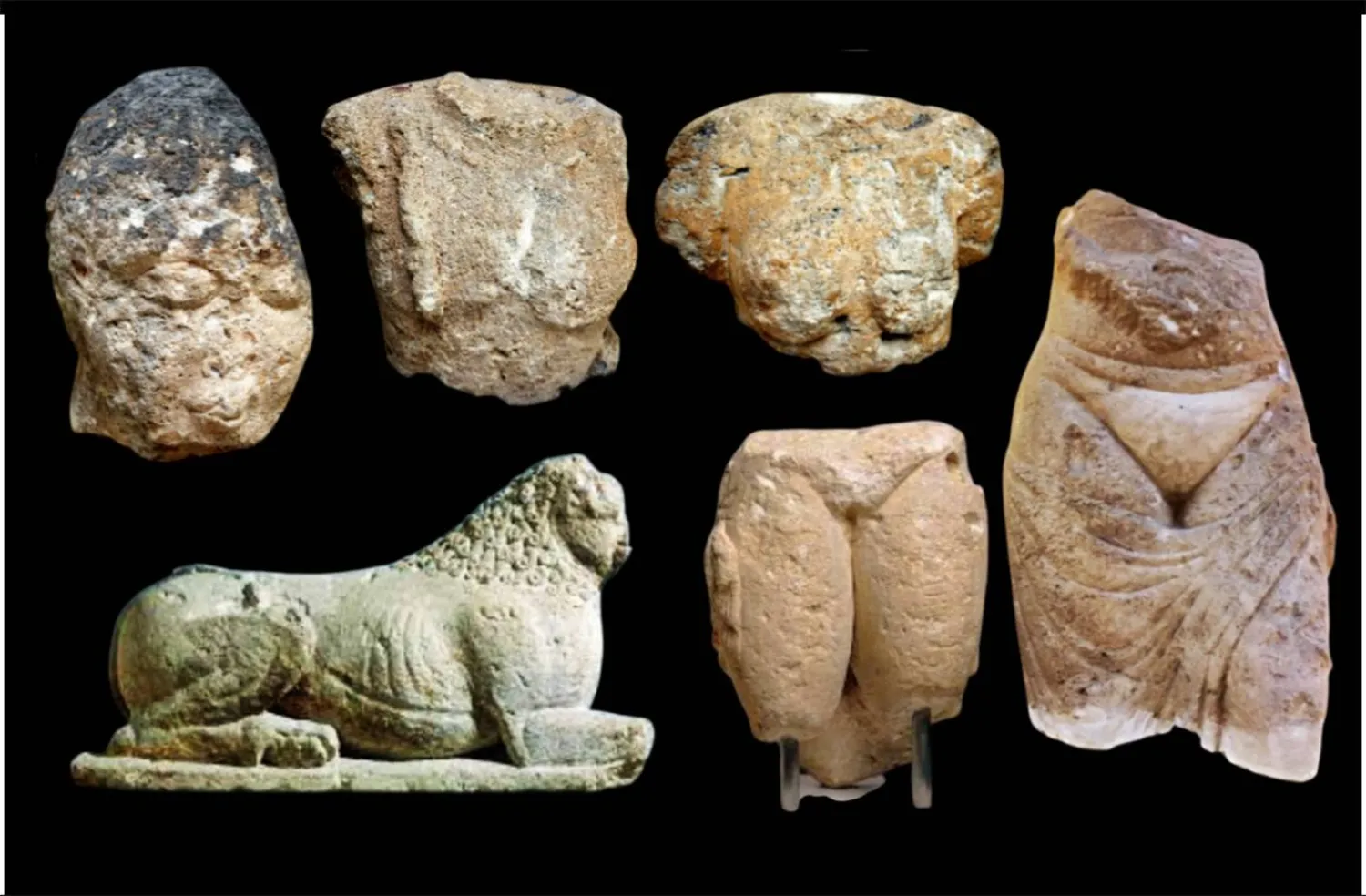by Mahmoud Zibawi
The Jordanian desert contains a series of Umayyad palaces, the largest of which is Qasr al-Mshatta, located in the Jiza District. Western Orientalist scholars first drew attention to this site in the late nineteenth century, and a German mission succeeded in transporting its massive southern facade to Berlin at the beginning of the twentieth century, after Sultan Abdulhamid II presented it as a gift to his ally, Kaiser Wilhelm II of Prussia.
The facade entered the Kaiser Friedrich Museum in 1903 and was later transferred to the Museum of Islamic Art in 1932. This museum is regarded as the oldest and largest institution dedicated exclusively to Islamic art in Europe and North America. The facade of Qasr al-Mshatta occupies the largest portion of this European complex, alongside a small, independent group of damaged sculptures that originally formed part of the palace’s furnishings. This group bears witness to a distinct Umayyad sculptural tradition, whose artistic identity became clearly defined through comparable assemblages discovered in other Umayyad palaces excavated during the 1930s.
The sculptures from Qasr al-Mshatta are displayed on white rectangular plinths in a corner of the gallery dedicated to the palace’s monumental facade at the Museum of Islamic Art in Berlin. At first glance, they resemble fragmented stone blocks positioned at the margins of this facade, which is adorned with limestone relief carvings that have largely preserved their original features. In this corner, one piece stands out for having retained most of its original form: a carved and polished block of limestone depicting a lion crouching on a white base, measuring 72 centimeters in length and 122 centimeters in width.
The lion appears firmly grounded on its folded hind legs atop a thin rectangular base devoid of ornament, with its front legs extended forward. Despite the loss of most of the head and the extremities of the forelegs, the sculptural composition remains clear and legible. The facial features have largely disappeared, making them difficult to reconstruct; however, the posture suggests an upright head pressed close to the chest, encircled by a dense mane composed of compact, parallel locks of hair that extend to include the beard, together forming a collar encircling the oval mass of the chin.
The body is elongated and smooth, with limbs clearly articulated in a manner that approaches naturalistic realism, as evidenced by the precise modeling of the joints. This approach is especially apparent in the treatment of the hind legs and is further emphasized by the pronounced protrusion of the claws marking their extremities. It is worth noting the existence of a small carved fragment originating from Qasr al-Mshatta in which these claws appear in a similar manner. It remains unclear whether this fragment originally belonged to the same sculpture or to a companion piece that formed a paired composition, in keeping with an artistic convention prevalent in the provinces of the Sasanian Empire. Although this empire came to an end with the Islamic conquest of Persia, its cultural legacy remained vibrant and left a profound imprint on Umayyad artistic production; the lion of Qasr al-Mshatta stands as compelling evidence of this cultural synthesis.
Facing this lion are several damaged sculptural fragments, each representing a small portion of a female figure whose original configuration is now difficult to reconstruct. One fragment preserves a head, retaining the wide eye sockets, the lower portion of the nose, and lips closed in a subtle smile. The cheeks are broad, suggesting that this youthful face belonged to a woman crowned by a voluminous mass of thick hair, whose upper surface is approximately twice the area of the face itself. By contrast, two additional fragments reveal a full and fleshy female torso.
A third fragment preserves the thighs of two closely set legs, which share the same robust character. This piece has retained its polished surface and is of medium scale, measuring 70 centimeters in height and 50 centimeters in width, indicating that it belonged to a statue conceived on a near life-size scale. This three-dimensional form preserves fine details of its execution, revealing a thin garment slipping away from the buttocks, with its edge still visible at the upper part of the left thigh. On this thigh appear traces of an inscription carved in Kufic script, running from top to bottom. Unfortunately, specialists have been unable to decipher the text, though one hypothetical reading suggests that it records the name of the woman represented by the statue.
The Jordan Archaeological Museum houses a comparable fragment uncovered during restoration and cleaning campaigns conducted by the Department of Antiquities in 1962 at Qasr al-Mshatta. This piece, likewise executed at near life size, measures 75 centimeters in height and 52 centimeters in width and represents the pelvis and upper portions of the legs. Here, the garment drapes over the right thigh, revealing the left thigh beneath, with sharply defined folds executed in accordance with the classical Greek style. The statue has lost its arms; however, the remaining lower portions indicate hands that once held objects whose identities can no longer be determined.
These sculptures attest to an Umayyad female sculptural ideal, whose formal characteristics first emerged through the study of the murals at an Umayyad desert site known as Qusayr ʿAmra, documented by the Czech scholar Alois Musil in a major two-volume publication issued in 1907. These characteristics were subsequently confirmed in the medium of sculpture through the discovery of similar female figures from an Umayyad palace located at Khirbat al-Mafjar, north of Jericho, during excavations conducted by a mission affiliated with the British Department of Antiquities in the mid-1930s.
This ideal is distinguished by a full, fleshy body inclined toward corpulence, as well as facial features that mirror this physical quality. The type recurs in multiple sculptural variants, and their study reveals the use of diverse hairstyles and ornamental schemes, forming a visual vocabulary that parallels the literary lexicon for which this remarkably productive period is renowned.









